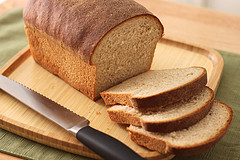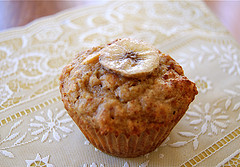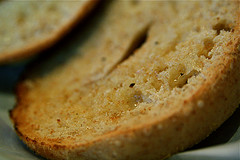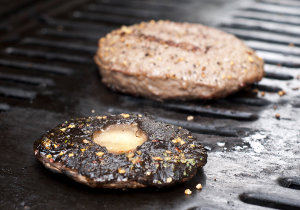Source:
Everybody knows that undercooked ground beef is risky. But there is one innocent looking food that is probably riskier: Raw sprouts.
Mike Doyle, director of the Center for Food Safety at the University of Georgia has been quoted as saying "I consider sprouts to be among the most risky foods sold at retail".
How could this be? How could innocent crunchy, juicy, delicious sprouts, full of nutrients and beneficial compounds, be dangerous? Because they are grown differently than any other vegetable, in an environment practically ideal for bacteria.
Let's get a close look at the problem and consider solutions.
In June 2011 vegetable sprouts from Germany contaminated with bacteria killed more than 30 people and sickened more than 3,000, and the outbreak has still not run its course.

The survivors had more than tummy aches. Many of their kidneys shut down, many have anemia, many were hospitalized, many were near death, and there almost certainly were thousands more who never reported their illness and just gutted it out at home.
In Germany it was
Escherichia coli O104:H4 on the sprouts. Sometimes it is
Escherichia coli O157:H7, sometimes it is
Listeria, sometimes it is
Bacillus cereus, but most often it is
Salmonella on sprouts. Tangy tasty radish sprouts also caused one of the world's largest food-borne illness outbreaks in Japan in 1996, sickening about 10,000 people (that we know of), many of them children. In the US there have been at about
40 sproutbreaks since 1990 according to
Bill Marler, a personal injury attorney who specializes in food-borne illness.
Mark Bittman of the New York Times interviewed
Dr. David Acheson, an MD who was the chief medical officer in Center for Food Safety and Applied Nutrition at the FDA. He said "only 5% of food-borne illness is linked to big outbreaks 95% is sporadic". He told me Bittman that there are 1.5 million cases of salmonella in the US each year, and few are linked to outbreaks. Marler and Doyle and the Center for Disease Control and other safety experts only know when there is an "outbreak", when many people get sick and when they go to a doctor and when their doctor does the right tests and then reports the results to the authorities.
Some probably thought they had the "24-hour flu". Well there is no such flu.
Look it up in WebMD. Zero hits. If you had the flop sweats and were on the toilet for a day or three, you probably had a food-borne illness caused by something you ate perhaps as long as a week ago. That's one of the reasons it takes so long to trace the cause of an outbreak.
FDA says "If you purchase a sandwich or salad at a restaurant or delicatessen, check to make sure that raw sprouts have not been added".
What makes sprouts risky
Sprouts are seeds that have just begun to grow, usually less than a week old. Inside every seed is a "germ", a sort of a baby plant, waiting for water and warmth to germinate. This is not a bad germ. It is part of the seed. Sprouts are easy to grow, and many people do it at home, you just soak the seeds in warm water until the germ is awakened, then rinse the seeds daily keeping them wet, and preferably warm and dark. So how do they turn into high risk disease vectors?
Alfalfa is a grass, that grows just like your lawn, but in a big field, and when you don't cut it, it produces lovely lavender flowers that eventually are fertilized and go to seed. The plant reproduces itself by developing scores of new seeds per plant, and each seed contains the germ of another alfalfa plant. But the seeds can be contaminated right there in the field and it is pretty hard to prevent it.
The sources of contamination are myriad. Critters are a strong possibility. Birds flying over, rabbits munching on the green shoots, deer grazing in the field, raccoons, field mice, rats, even feral hogs can poop in the fields and it is impossible to prevent them. Heck, sometimes farm workers are the source. I know we want perfectly safe food for our children, but as long as food is grown outdoors it is impossible to prevent unwanted intruders.
Another possible source of pathogens is water. Rain is pretty safe, but irrigation may not be. Lakes, streams, and wells can host the bad guys easily. They can come from improperly treated human waste in sewage or seepage from septic tanks. It can come from runoff from livestock pastures, where rainwater mixes with manure and drains into the water supply. It can come from fertilizer made from manure that has not been properly pasteurized. And it is hard to pasteurize manure. Manure, of course, is the fertilizer of choice for organic farmers, so organic seeds may, in fact, be more risky than others.
It can be amplified in water tanks or hoses where the bacteria can continue to reproduce. The problem is greater in areas that have less control over pollution such as third world countries that sell to the US market.
Once the bugs are on the seed and in the seed, yes, they can get down into the seed where they cannot be washed away, they can survive in a dormant state for weeks. They can even get down past the shell and into the germ. Then the seeds are harvested, mixed together in hoppers, and thus the seeds of a single plant that had bird poop on it can be distributed widely among millions of clean seeds. They are often then bagged in cloth, and stored in warehouses or sent overseas in the holds of ships where mice and rats have a chance to do their business on the seeds
So why aren't things like celery seeds used in our potato salad dangerous? Because the microbial load, which means the number of microbes, is usually very small on seeds. Even if you ingest them, there are usually not enough, and they don't grow fast enough in our gut to do us any harm. Many spice companies, knowing that they sell a product that is easily contaminated, treat their seeds and leaves with a special grade of radiation that sterilizes the product.
The problem is when the microbial load gets heavy. When microbes reproduce in a lab, they can double in 20 minutes, so within a few hours they can reach a deadly level. And that's why sprouts are uniquely dangerous when compared to other vegetables. Sprouts are grown indoors in a warm room. The seeds are soaked in water for up to 12 hours. The seeds can absorb up to three times its weight in water in this first phases. The seeds and water are stirred often to make sure they are all soaking properly, so if there are unwanted bacteria in the soup, they are spread among the whole mass. Warm water speeds the germination of the seed. The problem is, warm water also awakens the dormant bacteria.
Sprouting systems are essentially incubators, and it is very hard to prevent microbes from growing. They've tried chlorinated water and other purifying systems with only limited success. The problem is that the bad guys get down past the surface into the flesh of the seed. Germs get into the germ in a manner of speaking. A solution may yet be found, and believe me, people in the sprout biz have tried just about everything.
Finally, the wet sprouts are bagged and shipped to stores. They are chilled to keep them from growing too large, and that inhibits both the sprouts and bacteria. But it doesn't kill them. If the truck's AC is on the fritz, if they sit on the loading dock a while, or if they sit outdoors at the farmer's market too long, things can start growing again. A food safety scientist I know calls the packaging a "culture chamber".
According to the scientists at FDA "Rinsing sprouts first will not remove bacteria". And before you know it, people are falling face down in their salads.
Admittedly German authorities never found the smoking gun. All the contaminated sprouts had been eaten or destroyed by the time they got to the organic farm that probably grew them, but epidemiological research showed that it is highly likely that all the victims had eaten sprouts. Regardless, it doesn't diminish the fact that sprouts are risky, especially to children, the elderly, and the immune compromised.
Growing at home is only slightly safer
It is easy and fun to grow sprouts at home and there are scores of companies that sell kits. But the risk is only slightly less. You can start with an impressive range of tasty seeds. The first catalog I found offered this enticing array in their customer favorites list: Adzukis, alfalfa, almonds, amaranth, arugula, barley, broccoli, clover, cress, dill, fenugreek, garbanzos, garlic, groats, kamut, lentils, millet, mung beans, oats, peanuts, peas, pumpkins, quinoa, radish, rye, sesame, spelt, sunflower, and wheat. There are many more options.
But the procedure is the same: Soak, rinse, grow. The home sprouter is subject to the same concerns as the commercial operation: Contaminated seeds, ideal growing conditions for both sprouts and their unsavory passengers. And the risk isn't much lower if you buy from an organic farmer right around the corner whose kids go to school with yours and they are always immaculately groomed.
In 1987, Harmon et al recovered Bacillus cereus from 57% of commercially sold alfalfa, mung bean, and wheat seeds.
The only reduction in risk is that you usually are growing small batches, so there is a slightly smaller chance that there will be a bad seed or three.
How big is the risk?
Some say that the risk is much less than eating burgers, but that's because we eat so much more hamburger than sprouts. And most of that is cooked properly. Nobody knows the odds for sure, but I'll guess that it is probably less than driving your car, and probably more than eating eating raw burger.
If this number of deaths and illnesses were caused by terrorists, governments and the populace would be willing to spare no expense to cure the problem. But many people who love sprouts seem to be in denial, touting their taste and health benefits, and as I have learned in writing about the subject, they are having difficulty understanding the real risk.
Whose fault is it and what can be done?
E-coli is more common in cattle than in sprouts. There are dozens of strains, and most are harmless, but some glom onto your intestines and grow and produce toxins. There are some, like Dr. David Katz,
who want to place blame on the meat industry for this. But remember, runoff from livestock is only one potential source of the bug. Bambi, Porky, Bugs, Tweetie, Mickey & Minnie, and other cute little critters who refuse to use sanitary stations to do their business can easily be the source.
Marler told Bittman that "Maybe somewhere in the far distant past, before we started feeding grain to cows, these shiga toxins weren't in cows. And maybe because of a higher acid content in the gut these bugs evolved to become pathogenic. There isn't a lot of good science on this, and there have been studies that have gone either way in whether feeding grass to cows will create a lower level of pathogenic E. coli in their guts. What you can say is that cows fed DDGS [Distiller's Dried Grains with Solubles from ethanol production] may have a higher level than cows that weren't fed them. If you're anti-CAFO [Concentrated Animal Feeding
Operations commonly called "factory farms"] and anti-corn subsidies, you jump from that study to 'get rid of this and you get rid of e-coli,' and it would be great if things were that simple but they're not."
But attacking the meat industry is not likely to solve the problem. We are not going to be able to ban meat or significantly reduce consumption. People love to eat meat and will not likely give it up in significant numbers. In fact, the trend is going the other way as meat consumption is rising around the world.
That cow has left the barn. E-coli is in the soil, and water. It likely has been there a long time, and it will not go away in the visible future.
The alternative to CAFOs is to grow livestock free in pastures where they can eat grass. But the all poop. We can't put cattle in diapers. And the microbial populations in that manure gets into the water table, rivers, streams, lakes, and wells.
Some try to blame big ag like ConAgra, ADM, or Monsanto, but the sad fact is that many of the sprout growers are small family operations. I fear they are in an endangered industry.
The FDA, which regulates sprouts, and the USDA which regulates meat, can mandate more controls on pollution and inspections. Marler proposes that sprouts be given the raw milk treatment: Have the Feds make them illegal for interstate commerce. Of course this will not keep them out of intrastate commerce or home growing, but it would go a long way to protecting the public. Not likely in this political climate where mandates are a dirty word, even if they save lives. Just before Republicans took control of the House, the Obama administration got a new
Food Safety Modernization Act of 2010 through that will help with more funds for inspections, but Republicans want it repealed. Even so, the strain found in Germany is not on the wanted list in the US, and hardly anybody tests for it.
Another possibility is that groceries will stop selling sprouts.
In May 2010, tainted alfalfa sprouts were sold by Walmart and 22 people got sick. Walmart should take the lead and remove sprouts from the shelves the same as they would remove risky toys.
Irradiation will clean them up, but surveys show the public clearly doesn't like the concept of irradiation, and, despite the fact that it is approved in more than 40 countries, there are some who argue it is dangerous, or that it alters the flavor and nutrition.
The one solution that is foolproof: Throughly cook your sprouts. Cooking kills the bad guys.
Will you still eat raw sprouts?
Now you have the facts. Still want to eat raw sprouts? Serve them to grandma and the kids? In the words of Dirty Harry "You've got to ask yourself one question. 'Do I feel lucky?' Well, do you punk?"



























